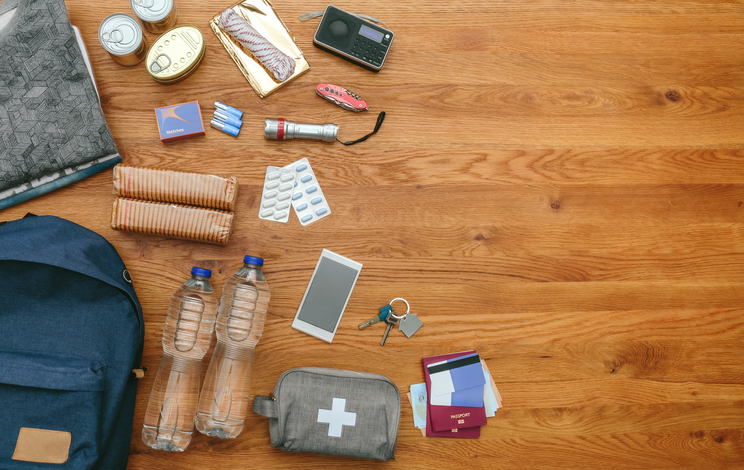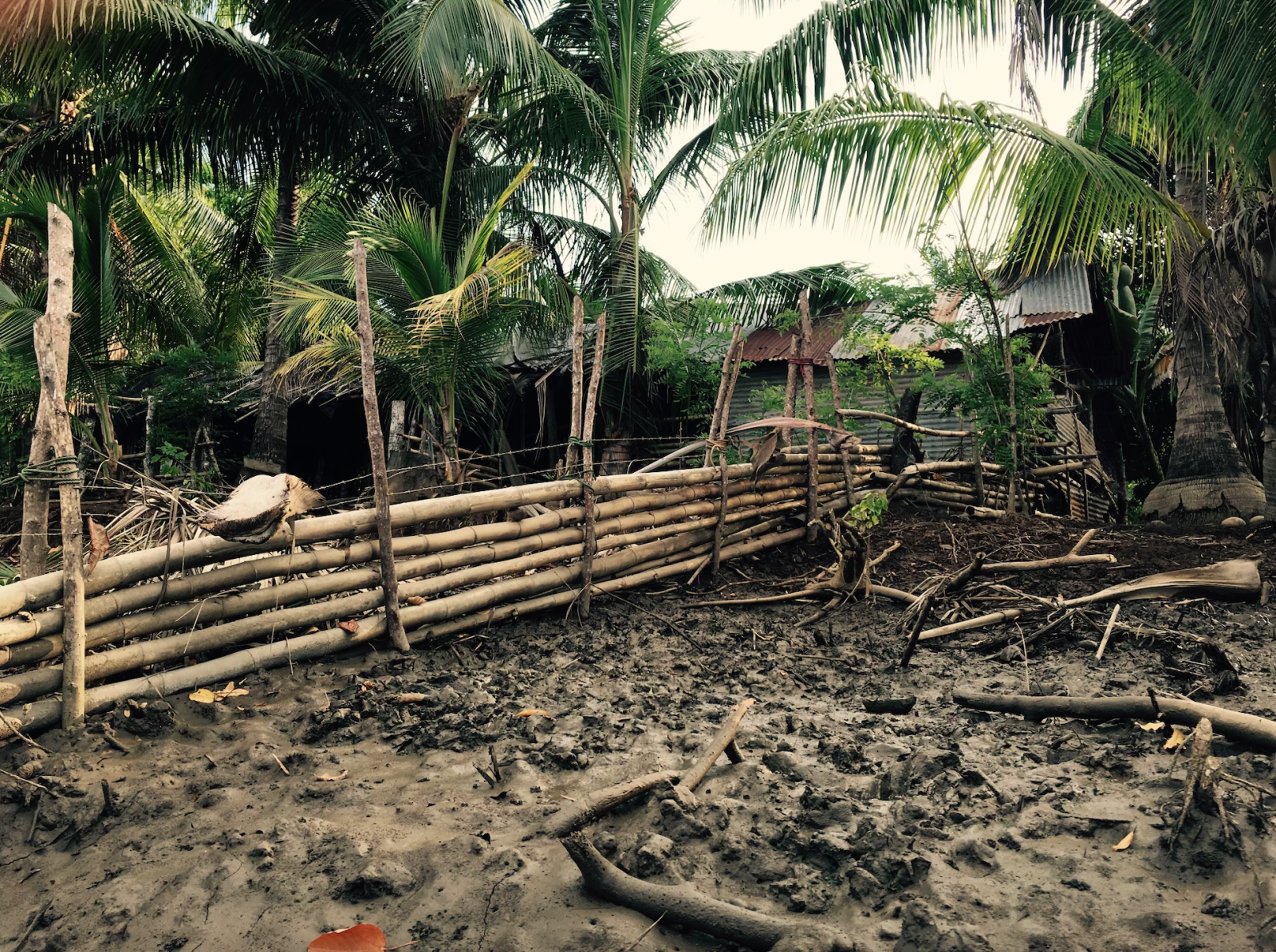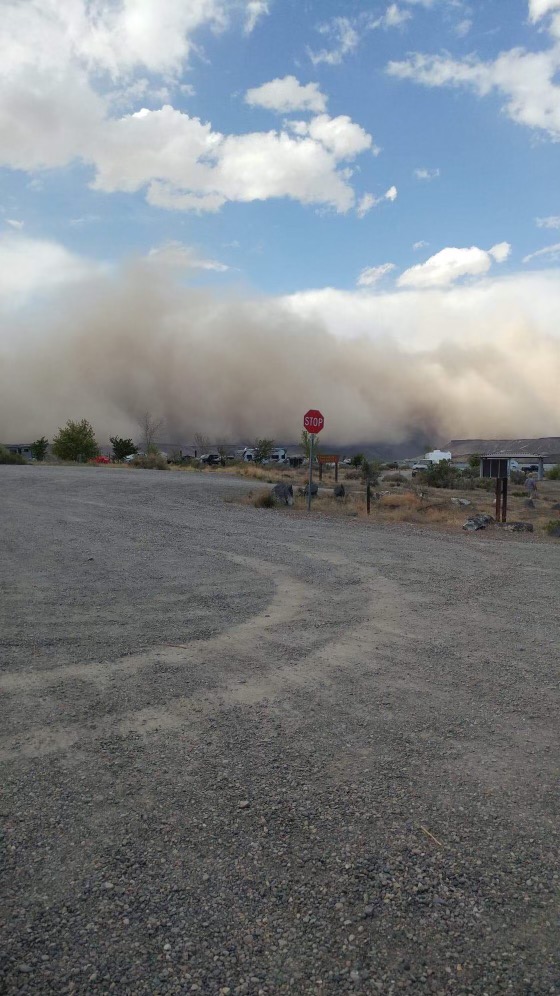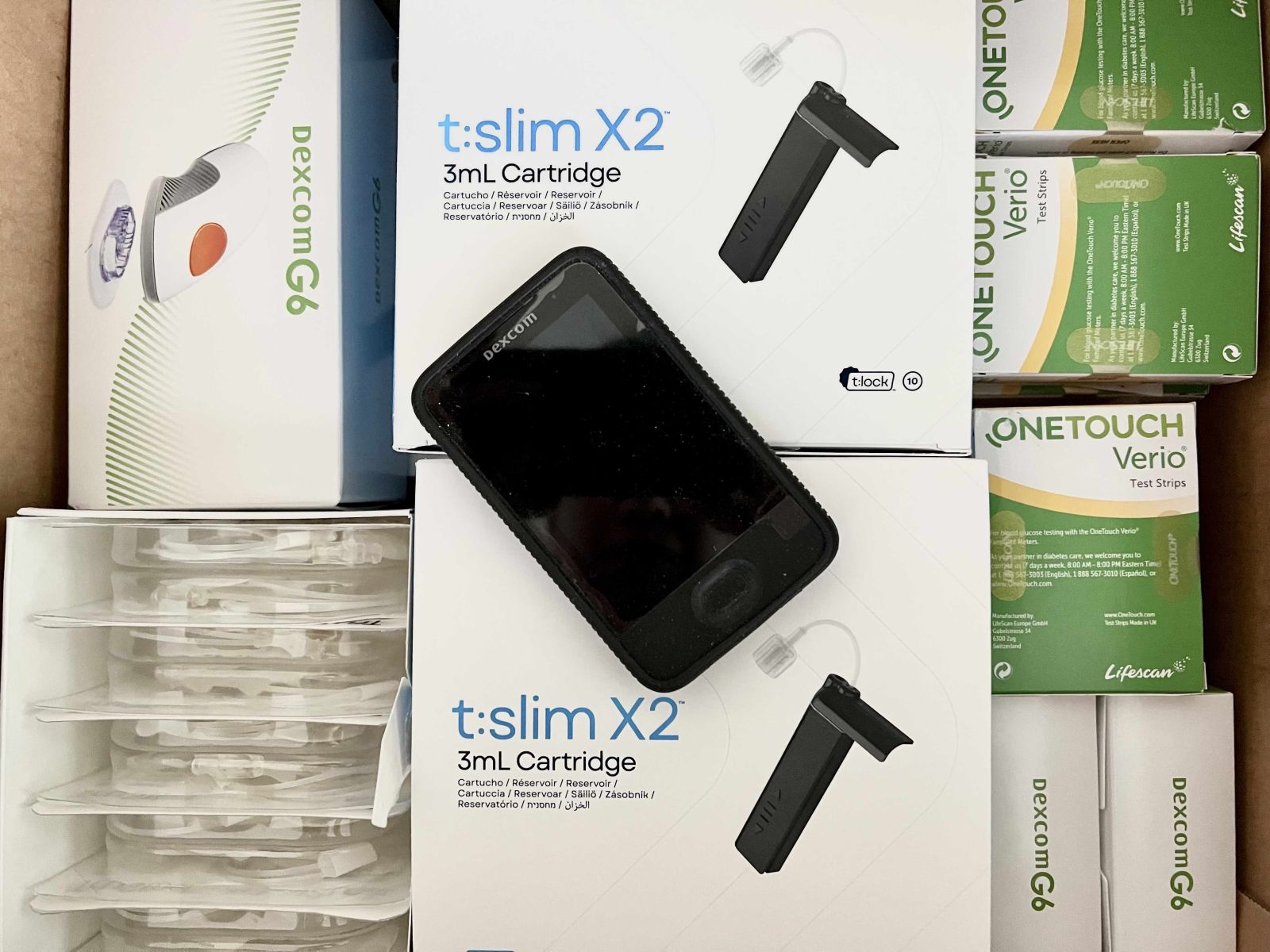Be Prepared: Surviving Natural Disasters with Diabetes
By Amber Clour
 It may not be possible to anticipate every emergency, but for those with diabetes, it’s especially important to prepare for the unexpected. Hear how people with diabetes survived natural disasters, what they learned about planning ahead, and the advice they have for others.
It may not be possible to anticipate every emergency, but for those with diabetes, it’s especially important to prepare for the unexpected. Hear how people with diabetes survived natural disasters, what they learned about planning ahead, and the advice they have for others.
Susan Hoagland, 70, who lives with type 1 diabetes, worked up until the day before Hurricane Katrina hit New Orleans in August 2005. Then like most people in the path of the hurricane, she headed out of town.
“In my mind, I was only heading to Austin [Texas] in anticipation of Katrina for a long weekend and didn’t pack all of my medications and supplies,” she said. Hoagland didn’t have a prepared container of supplies, including medications, food, hypo treatments, glucose monitoring devices packed and ready to go – something she would later regret.
***
Dealing with diabetes management every day takes considerable effort, and even when we’re on our A-game, things can at times get overlooked. It’s important to anticipate what might be needed in the case of a natural disaster, so that the fight or flight response due to an adrenaline rush doesn’t get the better or you and your health.
Growing up in Tornado Alley (Oklahoma) means long ago I developed a game plan for emergencies, so that an impending tornado, and the need to leave my home, would not imperil my diabetes management.
I wanted to reach out to others who have been in this situation, and to Carol Atkinson, an expert at the Diabetes Disaster Response Coalition, to hear more about surviving natural disasters and the tips and tricks they have found helpful. The bottom line is that everyone should be prepared to leave their home in case of an emergency with everything they need to make it through the crisis. Being prepared and having everything ready to grab and go means when a natural disaster strikes, you don’t have to face making layers of decisions, delay your departure, or augment your flight or fight response.
To be prepared, think about all the supplies you will need:
-
Medications: Put a supply of all your medications in separate containers to last a week or longer, and think about how to keep insulin at the right temperature, such as an instant cool pack.
-
Injection supplies: syringes, your insulin pens, extra pump supplies
-
Food, a source of glucose, water to stay hydrated: a supply of glucose tabs works really well, some bottles of water, and some food that doesn’t spoil
-
Monitoring supplies – like my CGM, a backup blood glucose meter and strips, and a way to measure ketones
-
Copies of prescriptions
-
An emergency contact list contact in case of an emergency
-
Cellphone charger
-
Batteries, an ID, and cash
***
The morning before Hurricane Katrina hit the banks of New Orleans, Hoagland was in a panic – not a good mindset when it comes to making sure she would have everything she would need to survive the catastrophic storm. As she gathered her things in a hurry, she realized she had nowhere to go. She called her son and daughter-in-law, who called friends until they found a place in Austin where she could stay. Despite the fact that it takes eight hours to drive to Austin from New Orleans, she left unprepared.
“I drove straight for two days because you couldn’t stop; there was nowhere to stay,” she recalled. “The rest areas were packed and I had to keep moving. I was fearful for my life and my animals – we had to make it to Austin. It was a nightmare and I wasn’t prepared. In retrospect, I was in survival mode, fueled by adrenaline and weathering high blood sugars.”
One of the many things we might forget as people living with diabetes is how much of an effect adrenaline and stress can have on our blood sugar. It is in our best interest to take the necessary precautions well in advance to lessen the burden on our health when disaster strikes. That includes having the technology you need to test your blood sugar, the medications you need to manage your glucose or other conditions, and back-up emergency supplies like food, batteries, and water.
I reached out to Atkinson, co-chair of the Diabetes Disaster Response Coalition (of which diaTribe is a member) and director of Insulin for Life USA, to find out what advice she has for how to survive the unexpected. She emphasized the importance of preparedness, especially for people living with a chronic illness.
"Always be prepared by building your preparedness kit well before disaster hits and make it customizable to your needs,” Atkinson said. “Be sure to check your kit every quarter to make sure nothing has expired. Other things to consider when packing your preparedness kit – a laminated copy of your prescriptions, photo identification, and cash."
Atkinson suggests leaving the checklist to the experts so you don’t have to worry about making a list yourself. The Diabetes Disaster Resource Coalition makes it easy by providing a downloadable preparedness plan checklist. And you can find even more resources from the coalition here.
 In 2016, Cynthia Celt and her husband, Mike, set off on an adventure in Costa Rica. After a four hour van ride in the middle of the night in heavy rain, the road was almost a foot deep with mud, and they found themselves stuck in a landslide.
In 2016, Cynthia Celt and her husband, Mike, set off on an adventure in Costa Rica. After a four hour van ride in the middle of the night in heavy rain, the road was almost a foot deep with mud, and they found themselves stuck in a landslide.
Rescue trucks soon arrived to extract them from the sea of mud. Before Celt knew what was happening, her bag containing all her diabetes supplies was placed into a truck and took off into the dark hills of the unknown country without her. She rode in the back of another truck back to the now powerless resort safely, but without her bag.
“My phone was dead, so I didn’t have my Dexcom readings,” Celt said. “My meter, chargers, and cables were in the back of another truck, which didn’t matter because I had no electricity to charge them. I had little bits of all my diabetes supplies with me, but not nearly enough to sustain me for the entire trip. I was scared to dose as I couldn’t check and had just a candy or two that remained in my purse to treat possible lows.”
Not having access to your diabetes supplies is scary, but Celt said she learned some valuable lessons from this unfortunate experience, including:
-
Always have a blood glucose meter and plenty of strips. “I had somehow failed to bring a meter,” she said. “Lesson learned 100 times over. I now carry a meter and more strips than I will need with me in my purse, even if only headed out for just a few hours!” Make sure that you have all the diabetes supplies you need to manage high or low blood sugar – including your medications and insulin, emergency glucagon, glucose tablets or small snacks, and a blood ketone meter.
-
Having a cell phone battery charger can come in handy. “What saved me when I did get our bags was a 72-hour backup phone charger,” she said. “It allowed me to finally see my blood glucose digits in real time again!” Make sure you have emergency backup batteries and chargers.
-
Research what services will be available to you in the event of an emergency (hospitals, pharmacies, stores to pick up low supplies, etc.). Though this was not her first diabetes travel fumble, being stuck in the dark in a landslide rattled her enough that she now packs back-up diabetes supplies for her back-ups!
-
Don’t be afraid to cause a “fuss” or make a scene if it means having access to the things you need to stay alive. “I should have held onto my bag and helped them understand my life depends on these supplies,” she said. “I was afraid and embarrassed to make an already challenging situation difficult.”
Atkinson stressed that same point, "When evacuating or during any emergency situation,” she said, “define yourself as an insulin dependent person living with diabetes, if you are one. Speak up for yourself."
In April 2021, Celt was thrown into yet another natural disaster scenario – one that that she had no way to prepare for.
She and her family were camping with friends in the sand dunes not far from their home in Boise, Idaho. They’re fairly seasoned campers, and this was supposed to be just a quick weekend getaway, nothing extreme as far as adventure goes.
She was cruising along in their kayak with her young daughter Madeline and her friend while her husband was in another boat fishing with the others.
“I began to feel the air change and heard sirens from a nearby air base,” Celt recalled. “I saw picnickers scrambling on the shore and then I looked up. What I saw was something I can hardly detail with words. The largest, most sky covering, thunderous sounding wall of sand was charging towards us. It was picking up trees and boats, tossing around bikes and pieces of campers on the land.”
 Later they learned the storm had overturned semi-trucks and vehicles along the highway. It was what is known as a Haboob, a desert sandstorm common on the Arabian peninsula.
Later they learned the storm had overturned semi-trucks and vehicles along the highway. It was what is known as a Haboob, a desert sandstorm common on the Arabian peninsula.
Thankfully before it hit, they were able to make it to shore. Celt grabbed the two small children and slung the dry bag carrying all her diabetes “gear” over her arm.
When out on the water all of her diabetes supplies are always stashed together in a single dry bag. That makes it easy for her to “grab and go”.
“I ran for the hopeful safety of our SUV perched on a shore ridge,” she said. “We piled in and watched as it thundered toward us.”
After several hours they were able to drive to their camper, only to find it ravaged by the storm. The winds did not let up for three days, and they slept in their SUV overnight. However, this time they were a bit more prepared. Celt said, “We always keep an emergency/hidden stash of low supplies, food, and water in the vehicle when camping.”
This scenario was a stark reminder of how quickly disaster can hit. Celt’s words of advice: “It’s impossible to be prepared at all times when living with diabetes. But having your supplies organized, and easy to access and grab on the way out, is incredibly valuable.”
In a different kind of emergency earlier this year, when the pandemic was raging, I packed my bags and relocated to San Antonio, Texas. My casita was the perfect isolation get away, until disaster struck. An unexpected cold front lingered in areas of central Texas where the people and the infrastructure were not equipped to handle below zero temperatures and power outages.
I lost power for days, but fortunately had a gas stove and access to a wood burning fireplace. I also was able to connect with neighbors, and we pooled our resources.
I didn’t fear freezing to death, but I worried my insulin might freeze. However, in the haze of stress I was feeling, I reminded myself the refrigerator wouldn’t get colder than it already was – and the insulation would keep my insulin from freezing. It wasn’t rocket science, but it was clear that my decision fatigue was in full swing. In a situation like this, when freezing your insulin is of great concern, diaTribe’s scientific and medical advisor Dr. Francine Kaufman suggested that you take out a fresh bottle of the insulin you need (basal, prandial, or both) and keep it either in a pocket or a small pack next to your skin. This way you know that you’ll have insulin that won’t freeze.
Stress, both mental and physical, can make diabetes management a nightmare. Keeping my cell phone charged for my CGM data was crucial. Luckily, my Subaru had plenty of gas, so once a day I would sit in the car parked on the street just outside my casita, crank up the heat and charge my phone.
But just when I thought we could get back to normal, our area was notified the water was not safe to drink. I’ve never been in a situation like this and was thankful to have the gas stove to boil water when needed. Not an ideal situation, but I managed.
 This entire situation made me think deeply about what’s important when faced with a natural disaster and what things I can realistically do to prepare in advance. Here’s my checklist:
This entire situation made me think deeply about what’s important when faced with a natural disaster and what things I can realistically do to prepare in advance. Here’s my checklist:
-
HAVE THE EMERGENCY KIT READY TO GO way before an emergency, with a list of all the supplies already in it and what you need to add before you go – like your insulin
-
If you are going to shelter in place, prepare by stocking up on your diabetes supplies and things like non-perishable food, water, batteries, toilet paper, etc., when your budget allows.
-
STAY CALM. It’s okay to be scared and worried, but having your wits about you will make it easier to focus on the items you need to pack.
-
It’s okay to ask for help whether it be for emotional support or supplies. Don’t be embarrassed to contact friends, family, neighbors, local shelters, food pantries, churches, and patient assistance programs. You can also always go to an urgent care facility or hospital if needed. Don’t hesitate in these situations and do what is best for your health and safety.
After some trial and error, I developed a system that makes chaotic situations easier for me to manage. I try to ask myself in these situations, what will I need to survive for at least the next 30 days? Below is a checklist that helps me stay focused.
-
First, I inventory my supplies so I know what I have and where it is located.
-
Then I locate a waterproof tub or bag (purchased well in advance) that I can pack my supplies into.
-
Finally, I start packing my supplies, including:
-
Insulin in a refrigerated case – this is the very last thing I throw in the tub when I am headed to an emergency shelter
-
Syringes for my medication
-
A copy of all my prescriptions
-
Blood glucose meter and plenty of test strips
-
Any CGM supplies I might need including sensors, applicators, and my phone
-
Insulin pump supplies
-
Low blood sugar snacks and glucose tablets
-
Other medications I might need (such as an inhaler, blood pressure pills, glucagon pen, etc.)
-
My driver’s license, passport, cash, and credit cards
-
My diabetes bracelet or disability jewelry
-
Emergency supplies like a flashlight
-
No one wants to prepare for a natural disaster, but if you take the time now to make sure you have everything you need, you won’t throw your diabetes under the bus when catastrophe strikes.
Below are a few helpful sites to make your natural disaster preparation easy:
-
Patient Preparedness Plan, Diabetes Disaster Response Coalition
-
Diabetes Disaster Preparedness Plan, Beyond Type 1
And check out some other articles you might want to visit for tips and tricks:
-
Hurricane Danger: A Diabetes UPDATE on How to Get What You Need and Give What You Can
-
Preparing for Natural Disasters: Strategies for People with Diabetes
-
When Hurricane Harvey Arrived, They Kept the Diabetes Community Afloat
About Amber
Amber Clour was born and raised in Norman, Oklahoma. Twenty-one days after her eighth birthday, she was rushed to Children’s Hospital where she spent two weeks learning how to live her new life with type 1 diabetes.
Since then, her life has been filled pursuing her passion for art, advocacy, non-profit ventures and travel. In 2015 she stepped down as Executive Director for a community artspace and gallery she founded to co-found DiabetesDailyGrind.com and the Real Life Diabetes Podcast. Amber’s – no filter – approach to sharing an honest look into her daily life resonates with many in the diabetes community. She hopes her story and those of podcast guests remind ALL people living diabetes – you are NOT alone.








